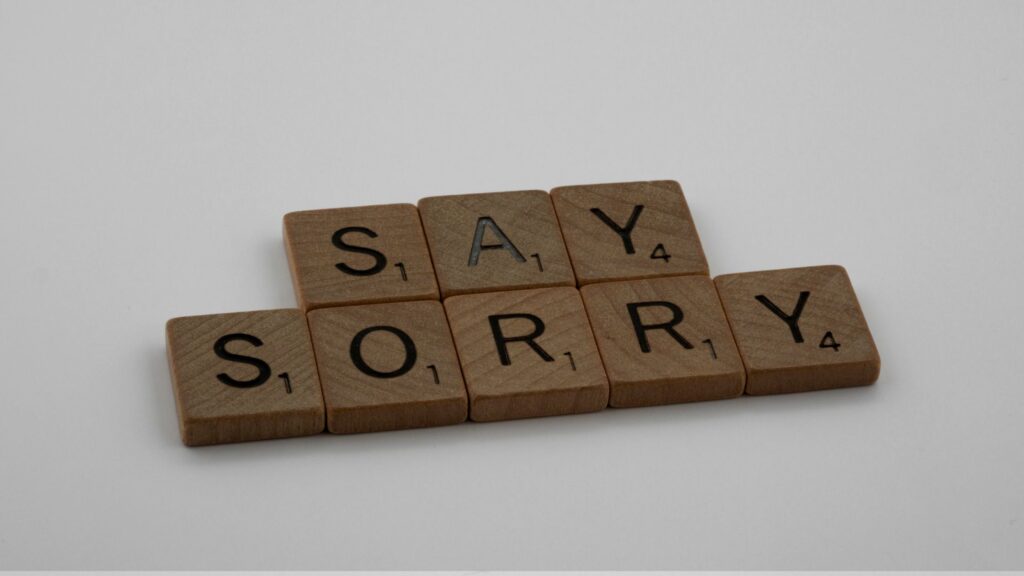The art of the corporate apology: a comprehensive guide
November 22, 2024

Publicly apologizing is not something most brands want to do, but it’s a crucial skill that can mean the difference between recovering from a crisis or suffering irreversible damage to their reputation. In a world where information spreads rapidly, how a company handles its mistakes can profoundly impact customer trust and public perception.
Why are apologies important?
Apologies are more than empty words; they are a powerful tool for restoring trust and protecting a company’s reputation. An effective apology shows customers that the company cares, acknowledges its mistakes, and is willing to make amends.
First and foremost, apologizing helps rebuild trust. When a company admits its faults and sincerely apologizes, it sends a clear message: it values its customers’ well-being, not just its image. This is especially critical during crises when public expectations are high, and transparency is more valued than ever.
A well-managed apology also helps protect a brand’s reputation. While a crisis can harm a company’s image, a prompt and honest response can mitigate the damage and prevent the situation from worsening. By being transparent and taking responsibility, the company demonstrates the values necessary to address the issue effectively.
Additionally, in some cases, a proper apology can reduce legal consequences. Admitting the mistake and offering a public apology may prevent the situation from escalating to lawsuits, showing an effort to resolve the issue before it becomes more serious.

What makes an apology effective?
The key to a successful apology lies in sincerity. Empty words won’t suffice; the apology must reflect genuine regret and a clear acknowledgment of the mistake. Sometimes, companies try to downplay their faults or deflect attention, but this only breeds distrust. The public needs to see that the company understands the gravity of the problem.
- Be Specific: Saying “sorry” isn’t enough. It’s crucial to clearly identify what went wrong. Being specific shows the brand has a deep understanding of the issue and is equipped to address it effectively.
- Take Responsibility: Assuming responsibility is vital for rebuilding trust. Blaming external factors is easy, but true leadership is demonstrated when a company acknowledges that, regardless of the circumstances, the responsibility lies with them.
- Act Quickly: Timing is key. The sooner a company apologizes, the less room there is for speculation and negative reactions. Responding promptly shows that the company is aware of the situation and taking steps to address it.
- Be Concrete: An apology should go beyond words; it must include clear solutions and commitments to prevent the mistake from happening again. This demonstrates the company’s dedication to continuous improvement and customer protection.
Examples of well- and poorly-handled crises
- Well-Handled: Johnson & Johnson – In 1982, a poisoning incident involving Tylenol tragically claimed several lives. The company quickly recalled all products and issued a sincere, transparent public apology. This approach helped them regain customer trust and became a benchmark for effective crisis management.
- Poorly-Handled: United Airlines – In 2017, an incident involving a passenger forcibly removed from a flight sparked widespread outrage. The company’s initial response was slow and lacked empathy, leading to a social media firestorm that severely damaged its reputation.
Crisis management success stories
When it comes to responding efficiently during a crisis, companies like Roche and Uber have shown how technology and speed can significantly improve crisis management.
- Roche implemented a system using Smartsheet, allowing them to manage 30% more projects with the same number of managers—crucial during critical moments when time is of the essence to resolve issues.
- Uber utilized tools to reduce the time needed to develop marketing campaigns by 45%, enabling them to react swiftly to unforeseen market changes. Operational improvements like these are key to maintaining calm and effective communication during a crisis.
Additional tips
- Train Your Team: Preparation is essential. Ensure your team is equipped to handle crises efficiently and knows how to communicate a unified message. This reduces the likelihood of uncoordinated responses that could worsen the situation.
- Monitor Social Media: Tools like Smartsheet or Hootsuite are essential for real-time monitoring of mentions, allowing you to quickly identify potential crises. These platforms provide sentiment analysis and enable proactive communication—vital for damage control.
- Learn from Mistakes: Analyze past crises to identify areas for improvement. This learning process will help you develop a more effective action plan for future emergencies.
Conclusion
The art of the corporate apology is an essential skill for any brand looking to protect its reputation and maintain positive relationships with customers. If the apology is sincere, specific, responsible, timely, and concrete, it can not only resolve a crisis but also strengthen the relationship with the public. An effective apology not only corrects a mistake but also demonstrates the company’s commitment to transparency and continuous improvement.




